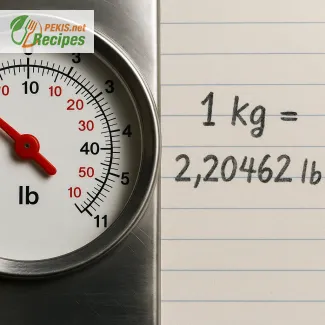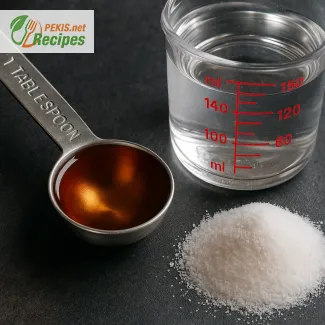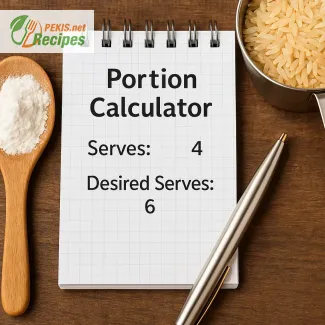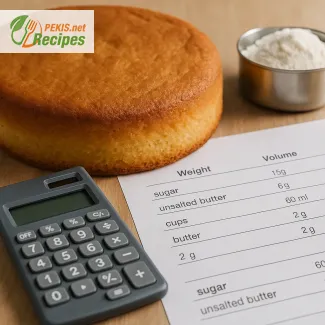
Convert 20 ml to tablespoons with this simple kitchen guide
A practical explanation for cooking and baking without guessing
Converting 20 ml to tablespoons is a common kitchen question, especially when following international recipes. Whether you're trying a European sauce, an American cake, or adjusting your grandmother’s handwritten notes, knowing exactly how many tablespoons 20 milliliters represents can make or break the dish. This guide is crafted for home cooks, bakers, and recipe developers who need accurate liquid conversions and want to cook with confidence and precision.
Understanding 20 ml in tablespoons
When you're working with milliliters, you're using a metric unit of volume. Tablespoons, on the other hand, are part of the imperial system or customary system used in countries like the United States, Canada, Australia, and the UK, although even those countries can vary slightly in their definitions of a tablespoon. So how do we go from 20 milliliters to tablespoons without confusion?
The most common standard for conversion is:
1 tablespoon = 15 ml
That means:
20 ml = 1.33 tablespoons
This is just a mathematical equation, but it matters a lot in real-world kitchen situations. If you're making a delicate sauce or baking something where exact liquid quantities affect texture or consistency, measuring correctly becomes essential. Using too much or too little liquid can result in soggy dough, runny batter, or overly concentrated flavors.
Why is 20 ml a common volume?
You might wonder why you often see 20 ml in recipes. It's a practical quantity for small additions like:
- Vanilla extract
- Olive oil
- Soy sauce
- Lemon juice
Especially in European recipes or scientific cooking approaches, 20 ml is a rounded, easy-to-use metric value. Translating it accurately into a tablespoon helps bridge the gap between metric and imperial systems, allowing anyone to use international recipes with ease.
Common tablespoon sizes around the world
Here’s where it gets tricky: not all tablespoons are the same.
- In the United States, 1 tablespoon = 14.79 ml
- In the UK, a tablespoon is usually considered 15 ml, though historically it could be 17.7 ml
- In Australia, 1 tablespoon = 20 ml (which is exactly what we're converting from!)
This means that in Australia, 20 ml equals exactly 1 tablespoon, while in other countries, 20 ml is just over 1 and ⅓ tablespoons. This discrepancy can cause small but noticeable differences in cooking, especially in baking.
Why precision matters in cooking and baking
In savory dishes, like stews or marinades, a small difference in volume may not ruin your recipe. But in baking, where you're working with precise chemical reactions, accuracy is critical. A little too much oil or too little liquid sweetener can throw off the moisture balance, impact rising, and change the texture completely.
This is why having a reliable kitchen conversion guide – or better yet, measuring tools marked in both ml and tbsp – makes such a difference.
The easiest way to measure 20 ml in tablespoons
If you don’t have a ml measuring spoon, don’t worry. Here's how to handle it:
- Use 1 full tablespoon
- Then add ⅓ of a tablespoon more (which is roughly 1 teaspoon)
Since 1 tablespoon = 15 ml, you need 5 ml more to reach 20 ml. And since 1 teaspoon = 5 ml, you're adding one full teaspoon to make up the difference.
So:
20 ml = 1 tablespoon + 1 teaspoon
That method is simple, accurate, and uses tools found in nearly every kitchen.
Visualizing 20 ml without measuring spoons
Let’s say you're in a rush and don't have any measuring tools. Can you eyeball 20 ml? It's not ideal, but here are some quick visual references:
- 20 ml is about 1 standard shot glass, filled slightly below the rim
- It’s roughly 4 teaspoons of liquid
- Or about ⅔ of a small espresso cup
Again, these are approximations. For anything more precise, especially baking, stick with accurate tools.
Tips to avoid common conversion mistakes
Many people accidentally use US tablespoons when a recipe calls for metric measurements, or they assume all spoons are created equal. Here's how to avoid that:
- Double-check your measuring tools – many spoons are marked with ml capacity
- If in doubt, use ml-based measuring cups or syringes
- Don’t assume that a soup spoon is equal to a standard tablespoon
Tablespoons used in cutlery sets are often larger or smaller than standardized measuring spoons. That can result in using too much or too little of an ingredient without realizing it.
What types of ingredients does this conversion apply to?
The ml to tbsp conversion works best for liquids. These include:
- Milk
- Water
- Oil
- Vinegar
- Extracts
- Liquid sweeteners like maple syrup or honey (though thickness may affect pouring)
When measuring dry ingredients, like sugar or flour, it's best to convert to grams, not tablespoons, because density matters more than volume.
How to remember the 20 ml conversion
An easy trick to remember:
- 1 tbsp = 15 ml
- 1 tsp = 5 ml
- So: 20 ml = 1 tbsp + 1 tsp
It’s a reliable ratio that works in nearly every culinary situation. Some cooks even write this on the inside of their kitchen cabinet for quick reference!
Other popular conversions worth learning
While we're on the topic, here are a few other conversions you’ll frequently encounter:
- 30 ml = 2 tbsp
- 5 ml = 1 tsp
- 10 ml = 2 tsp
- 60 ml = 4 tbsp = ¼ cup
Learning these few core conversions can dramatically speed up your prep time and reduce mistakes.
When cooking across systems – metric vs. imperial – it’s easy to make small errors that cause big changes. Knowing that 20 ml equals 1 tablespoon + 1 teaspoon empowers you to cook without second-guessing. Whether you’re following a French vinaigrette, an Australian marinade, or an American cake recipe, this simple knowledge gives you greater control in the kitchen.
So next time you see “20 ml” in a recipe, you’ll know exactly what to do – and why it matters.



